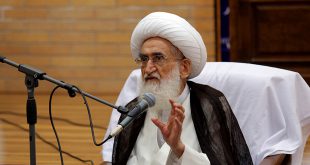Fatima Zahra (s.a.) was born in Mecca after the prophetic mission of the Prophet of Islam (pbuh)[1] eight years before her father’s migration to Medina.[2] She married Imam Ali (a.s.) when she had reached nine years of age.[3]
Since she had undergone much pain and suffering after the demise of her father[4], she asked Imam Ali (a.s.) to bathe and shroud her body, give her the coffin and bury her in the darkness of the night so that those who oppressed her might not attend her burial ceremony. She also asked that she be buried in an undisclosed location in Medina. Acting as per Fatima’s will, Imam Ali bin Abi Talib (a.s.) buried her in the darkness of the night and kept her grave hidden. In order for the enemies not to find the actual location of her grave, he made as many as 40 fresh grave shapes in Medina to mislead the enemies. Although Imam Ali (a.s.) and the children of Fatima Zahra, peace be upon her, knew the exact location of her grave, Fatima’s recommendation about concealing her grave was so serious and emphatic that none of them was prepared to disclose it. They even did not do an act that would give a clue to the enemies to discover her grave. Certainly, the Infallible Imams (a.s.) knew the location of her grave but they were not permitted to reveal this divine secret to anyone.[5]
In fact, based on the existing contexts, there are three probabilities or three sayings about Lady Fatima’s grave:
1. She was buried in her own house.
2. She was buried in between the Prophet’s pulpit and his house since the Prophet (pbuh) had said that it is one of the gardens of paradise.
3. She was buried in Baqi’ Cemetery.
——————————————————————————————————-
References
[1] Ahmad bin Abi Ya’qub bin Ja’far bin Wahab, Tarikh al-Ya’qubi, translated version, vol.1, p.375, Beirut, Sader Publications.
[2] Abul Hasan Ali bin Al-Hussein bin Ali Al-Mas’udi, Murawwij al-Zahab wa Ma’aden al-Jawhar, researched by As’ad Daghar, translated version, vol.1, p.644, Qom, Darul Hijrah, 2nd edition, 1409 A.H.
[3] History of Qom (Tarikh Qom), p.194.
[4] Sahih al-Bukhari, vol.20, p.447, and vol.13, p.135.
[5] Allamah Majlisi, Behar al-Anwar, vol.43, p.191, 178 and 214, al-Wafa Publications Institute, Beirut Lebanon, 1404, A.H; Manaqib Ibn Shahr Ashoub, Vol.3, p.362; Dalael al-Imamah, p.42.
 Ijtihad Network Being Wise and Faithful Muslim in the Contemporary World
Ijtihad Network Being Wise and Faithful Muslim in the Contemporary World
